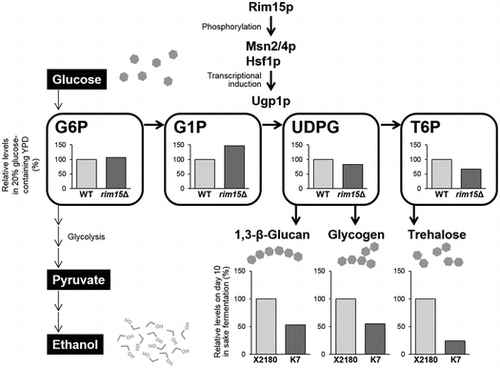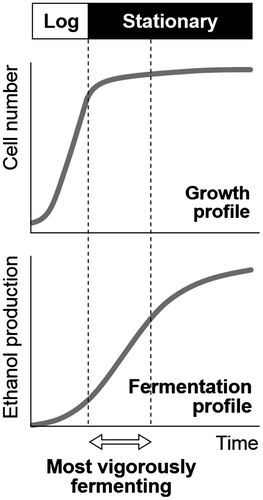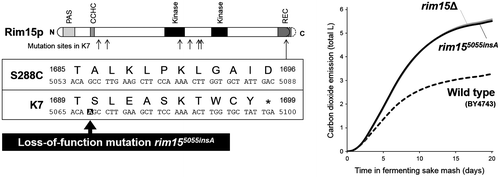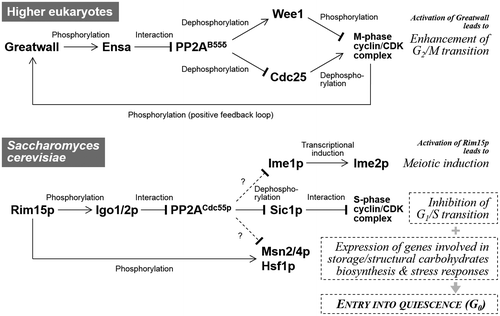Figures & data

Fig. 1. Comparison of growth and fermentation profiles.

Fig. 2. The rim155055insA mutation found in K7 accounts for the high-fermenting phenotype.

Fig. 3. Known functions of the conserved Greatwall (Rim15p)-Ensa (Igo1/2p)-PP2AB55δ (PP2ACdc55p) pathway in higher eukaryotes and S. cerevisiae.

Fig. 4. The Rim15p-mediated changes in UDPG and carbohydrate anabolic pathways result in inhibition of glycolysis and alcoholic fermentation [modified from Watanabe et al.Citation33)].
![Fig. 4. The Rim15p-mediated changes in UDPG and carbohydrate anabolic pathways result in inhibition of glycolysis and alcoholic fermentation [modified from Watanabe et al.Citation33)].](/cms/asset/fa05e459-c8ef-4871-899d-96d34871cc1a/tbbb_a_1295805_f0004_b.gif)
Fig. 5. The induction of UGP1 expression mediates the effect of Rim15p activation on alcoholic fermentation.

Fig. 6. Effects of deletion of the RIM15 gene in industrial strains.

